Keynote Speakers
CHEN Changqing: Cogitative mechanical metamaterials — Computing, encoding and storage of information
Cogitative mechanical metamaterials — Computing, encoding and storage of information
Cogitative/intelligent materials themselves having the capability of information processing have been imagined, but not realized for decades. Here, we show two mechanical metamaterials with intelligence. One is a reprogrammable mechanological metamaterial (ReMM) capable of universal computing in the sense of von Neumann architecture. The feasibility of the ReMM for basic functions such as mechanical computation, deformation signal transmission, combinational logic and sequential logic is demonstrated experimentally and numerically. Another is a temperature-responsive mechanical metamaterial with integrated information encoding, storage and display characteristics, realized by multistep deformation. The obtained results show that by delicate design of their microstructure with suitable stimuli-responsive materials, mechanical metamaterials can be developed to be cogitative.
CHEN Changqing, Ph.D.
Changqing Chen, Professor and Head, Department of Engineering Mechanics, Tsinghua University, China. His focus of study is multifunctional materials and structures, including piezoelectric smart materials and structures, cellular materials and structures, mechanical computing with metamaterials, and topological mechanics. He has published over 150 peer reviewed journal papers in J Mech Phys Solids, Nat Commun, Science Adv, etc.
CHO Kyujin: Origami-inspired Designs for Deployable, Adaptive Robots
Origami-inspired Designs for Deployable, Adaptive Robots
The convergence of robotics and origami introduces a transformative approach to robot design, unlocking unprecedented capabilities and possibilities. This talk explores the synergistic relationship between soft robotics and origami, focusing on developing deployable robots that seamlessly transition from pliable, compact structures to functional mechanisms. The discussion encompasses the potential applications of this fusion in creating robotic structures, grippers, arms, and wearable robots.
The foundation of this concept lies in harnessing soft materials and actuators and drawing inspiration from origami's folding principles to construct easily deployable structures.
Robots can initially exist compactly by strategically incorporating predetermined folds, allowing for efficient storage, transportation, and deployment. However, upon activation, these robots can exhibit enhanced functionality and adaptability, enabling them to perform a wide range of tasks successfully. Load bearing is an important problem for these robots after deployment. This talk will delve into the underlying principles and design strategies that underpin the fusion of robotics and origami.

Kyu Jin Cho is a Professor and the Director of the Soft Robotics Research Center and Biorobotics Lab at Seoul National University. He received his Ph.D. in mechanical engineering from MIT and his B.S and M.S. from Seoul National University. He was a post-doctoral fellow at Harvard Microrobotics Laboratory before joining SNU. He has been exploring novel soft bio-inspired robot designs, including a water jumping robot, a flytrap-inspired robot, origami-inspired robots, and a soft wearable robot. The work on the water jumping robot was published in SCIENCE and covered by over 300 news media worldwide. He has received the 2014 IEEE RAS Early Academic Career Award for his fundamental contributions to soft robotics and biologically inspired robot design. He has also received the 2014 ASME Compliant Mechanism Award, 2013 IROS Best Video Award, 2015 KROS Hakbo ART Award. He received the SNU academic award in 2021. He has served as a General Chair of RoboSoft 2019, and he is currently the IEEE RAS VP of the Technical Activities Board.
FUSE Tomoko: Infinite Fold and Repeated Fold
Infinite Fold and Repeated Fold
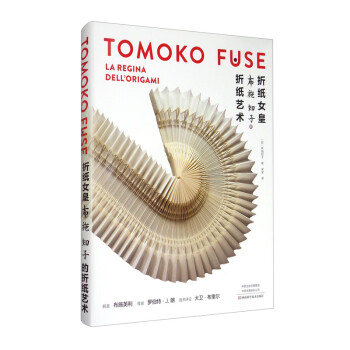
The presentation will report on the application of "infinite folding" and "repetitive folding" as contemporary art forms in a large-scale origami installation. It divides and repeats the same folding method. In origami, two-division works are predominant. Here are some examples of foldable pieces like a fan, including odd-numbered divisions. It is literally a repetition of the same fold. Simple-looking single form show unexpected strength when they become a group. Here, report on a modeling from what called "coil folds" and a modeling from simple pleats. The above two forms are the result of folding rules, and are forms that can only be seen in origami. Origami, which seems to be constricted by the rules of "folding," actually has wonderful potential for modeling.
FUSE Tomoko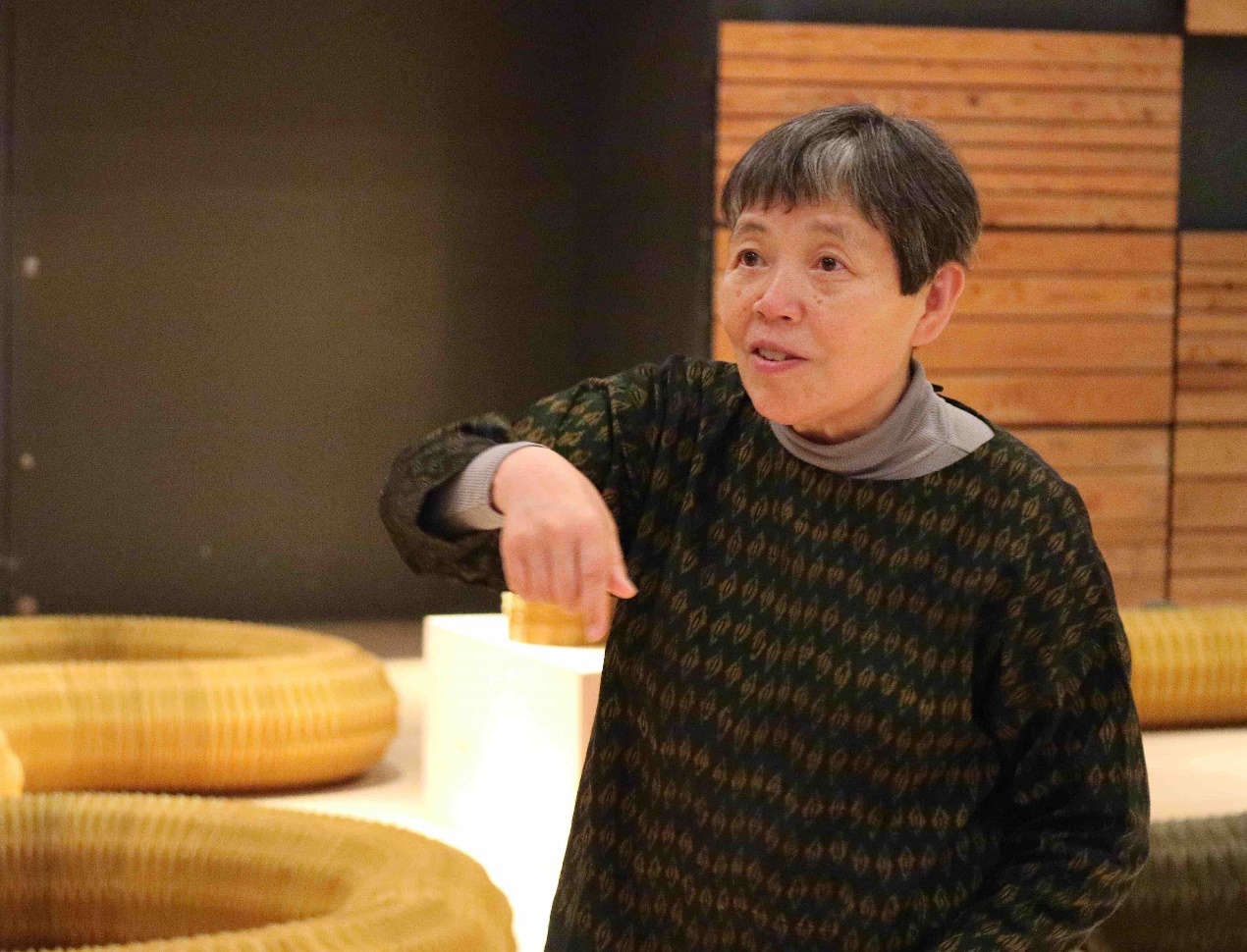
Tomoko Fuse is an independent origami artist, born in Niigata Prefecture Japan. She published first book on origami in 1981. Since then, she has published over 100 books in more than seven languages including English, Italian, and Chinese, etc. Her major work focuses on the large-scale origami installations. Her works has been exhibited in various events extensively throughout Germany, Israel, Australia, and Japan.
JIANG Hanqing: Origami-based Mechanical Metamaterials for Robotics and the Metaverse
Origami-based Mechanical Metamaterials for Robotics and the Metaverse
Origami, the art of paper folding, is being transformed by scientists, mathematicians, and engineers into innovative design approaches to harness its unique properties, i.e., crease-dependent tunable properties. Inspired by this property, this talk will be started by presenting the stability of origami structures for on-demand deployability and compressibility through designed loading and unloading passes, its applications in robotics, followed by curved origami patterns to enable in-situ stiffness manipulation covering negative, zero, and positive stiffness, and origami-enabled mechanical haptics with application in the metaverse. These studies open ways to design origami-based mechanical metamaterials with variable applications.
JIANG Hanqing, Ph.D.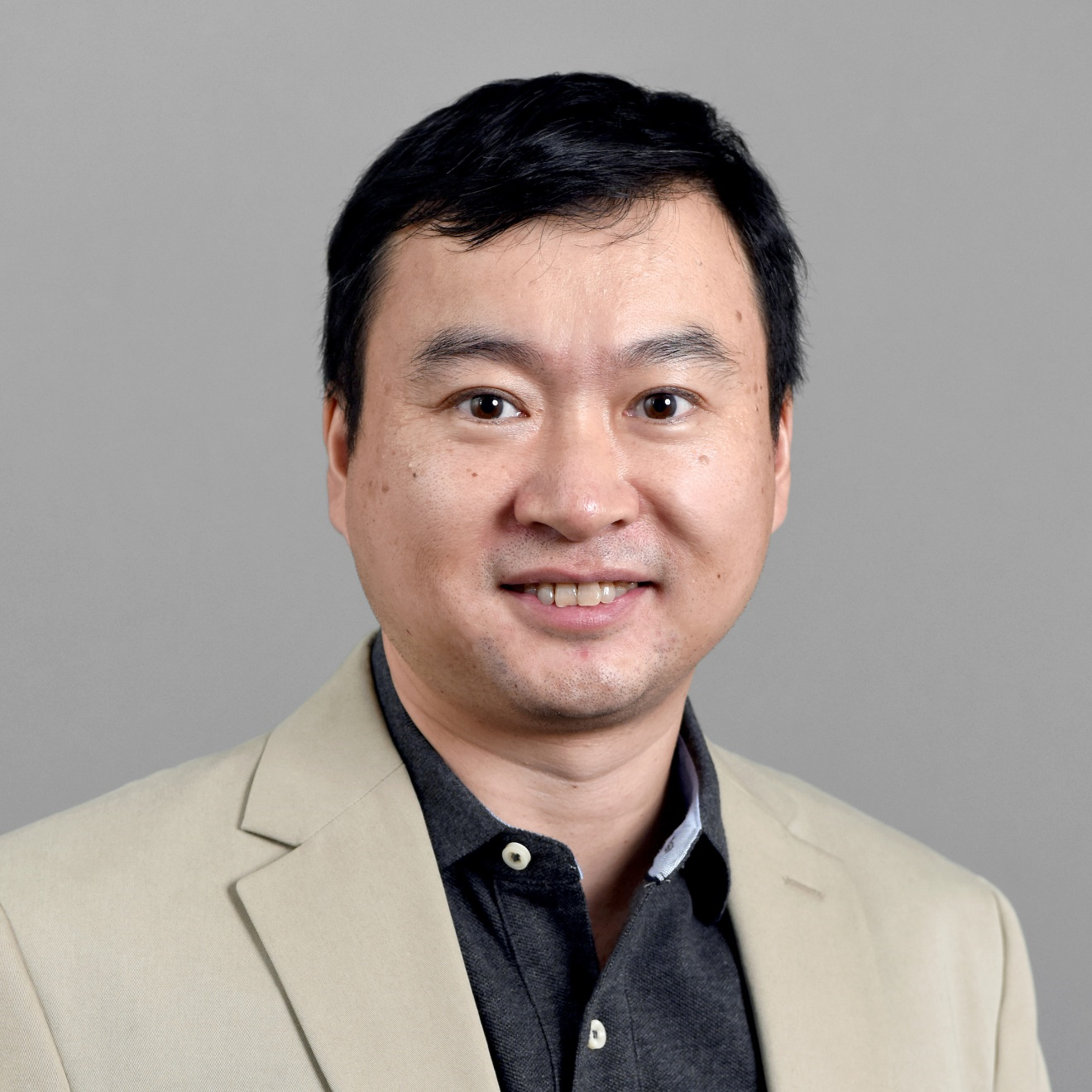
Hanqing Jiang is a Chair Professor of Mechanical Engineering at Westlake University in China. Before joining Westlake University in June 2021, he was a faculty member of Mechanical Engineering at Arizona State University from 2006 to 2021. He received his Ph.D. from Tsinghua University in 2001, majoring in Solid Mechanics. His current research interests include the origami and kirigami based mechanical metamaterials and robotics, mechanics of lithium-metal batteries, and unconventional electronics. He has published 5 book chapters and more than 150 peer-reviewed journal papers. He was elected to an ASME Fellow in 2016. He is a member of the executive committee of the Materials Division of ASME and is the President of the Society of Engineering Science in 2022. Selected honors include an NSF CAREER Award (2009), ASME Worcester Reed Warner Medal (2021), etc.
LENG Jinsong: Programmable Shape Morphing Structures: from Fundamentals to Applications
Programmable Shape Morphing Structures: from Fundamentals to Applications
Shape memory polymers and their composites are smart materials with excitation response. They have the ability to maintain temporary shape and return to their original shape under specific external environment excitation (thermal, light, electrical, magnetic, pH, etc.). At present, shape memory polymers such as epoxy, cyanate ester, styrene, polyimide, polylactic acid, and polyurethane with adjustable glass transition temperatures have been developed. Smart structures prepared based on shape memory materials have unique shape memory properties and characteristics of lightweight and high strength and have the functions of active deformation, self-sensing, self-driving, and self-repairing. We have developed a variety of shape memory smart structures, which have been initially applied in aerospace, biomedical, 4D printing, and other fields. Potential applications for shape memory polymers and their composites will also continue to expand elsewhere.
LENG Jinsong, Ph.D.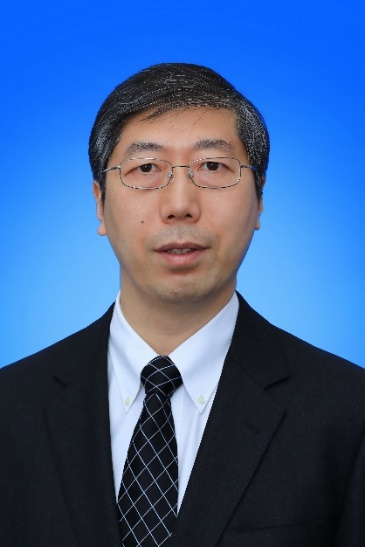
Jinsong Leng is a professor at Harbin Institute of Technology, China. He is a Member of Chinese Academy of Sciences, the Foreign Member of Academia Europaean, Member of the European Academy of Sciences and Arts. He is the dean of School of Future Technology, Director of the Center for Smart Materials and Structures (CSMS), and Director of International Center for Applied Mechanics at Harbin Institute of Technology (HIT), China. His research fields include smart materials and structures, 4D printing and space deployable structures, etc. He currently serves as Vice President of the International Committee on Composite Materials (ICCM), Vice President of the Chinese Society for Composite Materials (CSCM), Vice President of Chinese Society of Aeronautics and Astronautics (CSAA), and Editor-in-Chief of the International Journal of Smart and Nano Materials (IJSNM). He was elected as Fellow of American Association for the Advancement of Science (AAAS), Fellow of the Society of Photo-Optical Instrumentation Engineers (SPIE), Fellow of Institute of Physics (IOP), Fellow of Royal Aeronautical Society (RAeS), Fellow of Institute of Materials, Minerals, and Mining (IMMM) and Associate Fellow of American Institute of Aeronautics and Astronautics (AIAA).
LU Guoxing: Application of Machine Learning to Origami Metamaterials and Structures
Application of Machine Learning to Origami Metamaterials and Structures
Origami-inspired metamaterials and structures are gaining interest. This presentation describes our studies of applying different machine learning techniques to origami metamaterials and structures. Three unique examples are presented, energy absorption of Miura origami metamaterials, bi-stability analysis of a square twist unit, and tunable acoustic performance of a Miura metamaterial. Each case makes use of special features of the machine learning strategy. The importance of physical sights is demonstrated by adopting dimensional analysis, which reduces the complexity of the problems and enhances the accuracy of machine learning approaches.
LU Guoxing, Ph.D.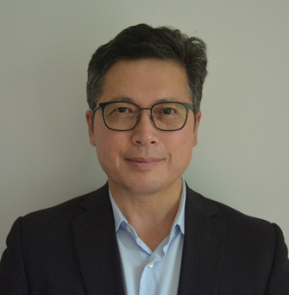
Professor Guoxing Lu is President of International Society of Impact Engineering. He obtained his Ph.D. in 1989 from the University of Cambridge. After one-year post-doctoral research at Cambridge, he worked as a faculty member at Nanyang Technological University, Singapore, and presently is University Distinguished Professor and Director of Impact Engineering Laboratory at Swinburne University of Technology, Melbourne, Australia. His research interests are energy absorption of structures and materials, mechanical properties of materials at high strain rates, impact mechanics and most recently origami structures. He has over 290 publications in international journals and two monographs co-authored with Professor Tongxi (TX) Yu on the topic of plastic analysis and energy absorption of structures and materials. He has ~14400 citations with an H-index of 64 (GoogleScholar). He is an Associate Editor of International Journal of Impact Engineering and a member of editorial board of International Journal of Mechanical Sciences, Thin-Walled Structures, Composites B, Scientific Reports and others. He is Associate Dean Research, School of Engineering at Swinburne.
MITANI Jun: Curved-Folding Origami
Curved-Folding Origami
While origami is an art form that creates various shapes from a single sheet of paper, its engineering potential has attracted significant attention, leading to extensive research. Folding, the fundamental operation in origami, typically involves straight folds that tend to enclose flat areas. However, paper can be flexibly bent to create curved surfaces, known as developable surfaces. By incorporating curved folds, it is possible to create shapes composed of piecewise developable surfaces, offering a wide range of modeling possibilities, similar to origami with straight folds. However, research on curved folding in origami has not been as widespread. In this talk, the speaker will present a variety of research on curved folding they have conducted, including artistic forms that incorporate curved folding and their corresponding design methods.
MITANI Jun, Ph.D.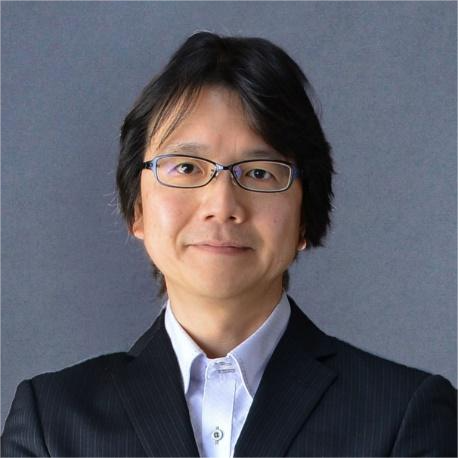
Mitani is a professor of Information and Systems at University of Tsukuba. He received his Ph.D. in engineering from the University of Tokyo in 2004. He has been present post since April 2015. His research interests center on computer graphics, in particular geometric modeling techniques and their application to origami design. The origami artworks created by him have features that are three-dimensional shapes with smooth curved surfaces. His main books are “3D Origami Art” and “Curved Origami Design”. In 2010, through an exchange with ISSEY MIYAKE, he contributed to the launch of the new 132.5 fashion brand. He also cooperated in the design of origami used in the movies "Shin Godzilla (2016)" and "Death Note Light up the NEW world (2016)". His unique origami has been well received around the world and he had received invitations to hold workshops and exhibitions in Germany, Switzerland, Italy, Israel and many other countries. His work had inspired the design of the trophy for the Player of the Match winner of each game at the Rugby World Cup 2019. His major awards are “Microsoft Research Japan Informatics Research Award, 2012” and “The 2nd Japan Society for Graphic Science Award, 2007”. He was appointed as a Japan Cultural Envoy from the Agency for Cultural Affairs in 2019. He visited eight Asian countries in November and December 2019 as the envoy.
WANG Yuesheng: Reconfigurable Metasurfaces and Tunable Manipulation of Acoustic/Elastic Waves
Reconfigurable Metasurfaces and Tunable Manipulation of Acoustic/Elastic Waves
An acoustic/elastic metasurface is a kind of two-dimensional metamaterials with microstructures of subwavelength size. It is constructed by a series of functional elements forming a phase gradient. It has unique properties, e.g., ultrathin thickness, low loss and easy fabrication. It shows potential applications in acoustic imaging, communications, invisibility and camouflage, vibration/noise control, energy harvesting, nondestructive testing, particle operation, signal analog computing, information storage, acoustic security, etc., metasurfaces have been showcased as an excellent candidate for wave control. Up to now, various exotic features and functionalities of metasurfaces (e.g., anomalous reflection and refraction, focusing, beam self-accelerating, acoustic vortex, scattering diffusion) have been investigated. However, most studies focused on the design of acoustic/elastic metasurfaces for a certain frequency in order to achieve a certain functionality. That is, the metasurface must be re-designed and rebuilt if the working frequency or the desired functionality changes. To overcome this limitation, reconfigurable or tunable metasurfaces were proposed. This is becoming a hot topic. In this report, we will present a brief review on the progress of this topic with concern of several challenging problems: design of reconfigurability and its mechanism, strategy and method of tunability realization, implementation of programming and feedback control, etc.
WANG Yuesheng, Ph.D.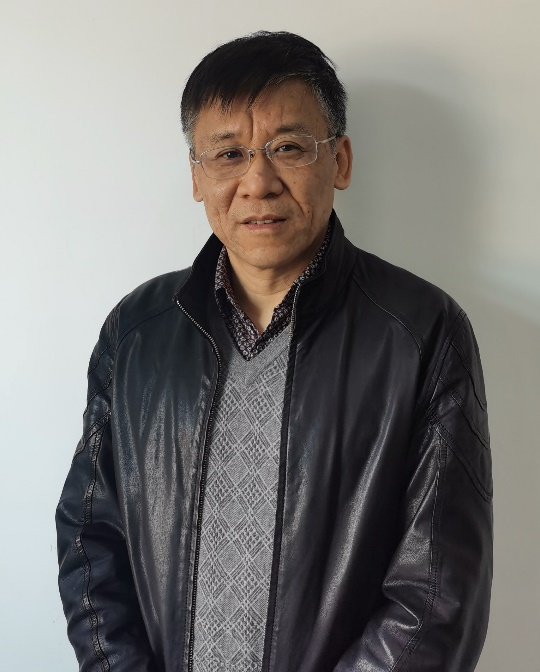
Yue-Sheng Wang is a Professor at Department of Mechanics in Tianjin University (TJU). He received his B.S. in Applied Mechanics from Fudan University, Shanghai, in 1988, and Ph.D. in Solid Mechanics from Harbin Institute of Technology in 1993. Then he worked with Harbin University of Civil Engineering and Architecture as a Postdoctoral Research Fellow from 1993 to 1995. He held faculty position at Institute of Engineering Mechanics, Beijing Jiaotong University (BJTU) before he joined TJU in 2018. His current research interests include wave propagation and control, especially in acoustic and elastic waves in complex media and structures such as phononic crystals/metamaterials/metasurfaces, fluid saturated porous media, composites with inclusions and cracks, layered structures with unilateral contact interfaces, layered smart material structures, etc. Other research interests include dynamic instability of frictional sliding, nonlinear ultrasonic NDT&E of damage for metal materials and adhesive joints, fracture and contact mechanics of functionally graded materials. He has Over 400 SCI journal papers and 2 book Chapters. He received the 2022 Lloyd Hamilton Donnell Applied Mechanics Reviews Paper Award. He is now the associate editor-in-chief of Acta Mechanica Solida Sinica, and the editorial board member of Applied Mathematics and Mechanics and International Journal of Applied Mechanics.
YANG Jinkyu: Origami for Designing Advanced Impact Mitigating Structures
Origami for Designing Advanced Impact Mitigating Structures
Impact mitigation technology is needed in many engineering fields, such as aerospace, automotive, biomedical, civil engineering, and robotics. In this talk, I will demonstrate how origami can be used as a design principle to realize advanced impact mitigating structures. Specifically, I will show (1) origami-based waveguide with a counter-intuitive impact mitigation mechanism; and (2) composite origami tube for enhanced crashworthiness. Computational simulation and experimental demonstration results will be presented along with the discussion on the target engineering applications. I will also touch briefly upon other engineering applications of origami-based structures.
YANG Jinkyu, Ph.D.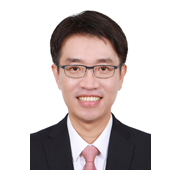
Jinkyu Yang is a Professor in Mechanical Engineering at Seoul National University. He was formerly a Professor in Aeronautics & Astronautics at the University of Washington. He received his Ph.D. degree in Aeronautics and Astronautics from Stanford University (2005) and BS degree in Aerospace Engineering from KAIST (2000). His research has been directed towards developing novel engineered materials and structures, e.g., metamaterials, phononic crystals, and nonconventional composites, for aerospace, biomedical and mechanical applications. His research has been featured in news media, such as Reuters, NSF News, and U.S. Public Broadcasting Service, and he is currently an Associate Fellow in AIAA and an Associate Editor for AIAA’s Journal of Aircraft.
YOU Zhong: From Single DOF Miura-ori to a Reconfigurable Origami Tessellation
From Single DOF Miura-ori to a Reconfigurable Origami Tessellation
The Miura-ori is the most researched origami tessellation. It is a rigid origami with a single degree of freedom (DOF), indicating that, in general, it has one motion leading to only one final form. It is a good choice for easily controlled deployable systems. However, the lack of alternative motions is unfavourable for multifunctional applications requiring reconfigurability. In this talk, I shall explore the possibility of converting the Miura-ori into reconfigurable structures with two degrees of freedom. The approach is to first convert the Miura-ori to a kirigami tessellation by cutting open some creases of rigidly foldable patterns. The slits are equivalent to removal of kinematic joints, which, in turn, brings more DOF. The fundamental building blocks used to construct the reconfigurable patterns are two-DOF spatial 8R linkages resulting from two-crease-long slits. Assuming a regular multiplication of such slits inside a Miura-ori produces rigid kirigami variants of the Miura-ori that are reconfigurable and have only two DOF. The origami tessellation can be extended indefinitely without changing the overall number of DOF. The new motion paths lead to numerous alternative shapes and folded forms. At particular reconfigurations, the assembly even displays metamorphic and kinematotropic behaviour, which increases available shapes. The approach has also been also extended to other one-DOF rigid origami tessellation such as the Eggbox, Anisotropic Miura, Arc-Miura and Arc patterns. Their reconfigurable two-DOF versions are found. All findings are validated by physical models.
YOU Zhong, Ph.D.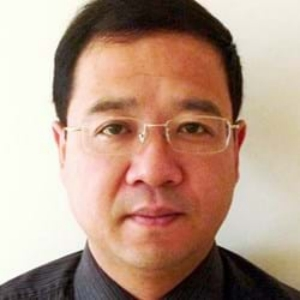
Zhong You is currently a Professor of Engineering Science at the Department of Engineering Science, University of Oxford. He is also a Fellow of Magdalen College. Zhong obtained his BS from Shanghai Jiao Tong University, and MS from Dalian University of Technology, and Ph.D. from Cambridge University. He serves on the editorial board of some renowned journals, including ASME Journal of Mechanisms and Robotics (Associate Editor), Scientific Report and IMechE Journal of Mechanical Engineering Science Part C. Zhong’s research is concerned with the design and realisation of novel deployable and origami structures, a type of unconventional structures capable of large shape changes. He has published many ground-breaking research papers in prestigious journals including SCIENCE and PNAS. His work was selected for the Science Day Exhibition at Buckingham Palace in 2007, organised by the Royal Society. SCIENCE introduced Zhong’s research work in their “profile” section. In addition, he developed a flow diversion stent to treat cerebral aneurysms. Oxford Endovascular, a university spin-off company, was founded to commercialise this technology.
Program
| Day 1 - Oct 13 afternoon | ||||
| 12:00-21:00 | On-site registration | |||
| Day 2 - Oct 14 morning | ||||
| Keynote session | ||||
| 8:30-9:00 | Opening ceremony | |||
| 9:00-9:35 | Zhong You: From Single DOF Miura-ori to a Reconfigurable Origami Tessellation | |||
| 9:35-10:10 | Guoxing Lu: Application of Machine Learning to Origami Metamaterials and Structures | |||
| 10:10-10:30 | Tea break | |||
| 10:30-11:05 | Keynote speech (online) | |||
| 11:05-11:40 | Tomoko Fuse: Infinite Fold and Repeated Fold | |||
| 11:40-12:15 | Jinsong Leng: Programmable Shape Morphing Structures: from Fundamentals to Applications | |||
| 12:15-13:30 | Lunch | |||
| Day 2 - Oct 14 afternoon | ||||
| Parallel sessions | Origami Art and Mathematics I | Design for Morphing or Deployable Structures I | Mechanics of Origami Structures and Materials I | |
| 13:30-13:55 | Alex Pentek: Folding with Endless Potential: Origami as a Doorway to Creativity | Hongwei Guo: Spatial Applications of Origami Structures | Jianguo Cai: Origami-inspired Deployable Membrane Structures | |
| 13:55-15:40 | Oral presentations 1-7 | Oral presentations 1-7 | Oral presentations 1-7 | |
| 15:40-15:55 | Tea break | |||
| Parallel sessions | Origami Art and Mathematics II | Design for Morphing or Deployable Structures II | Mechanics of Origami Structures and Materials II | |
| 15:55-16:20 | Wenwu Chang: A New Way of Forming Special Rhombic Pyramid by Origami | Xiaofei Ma: Research on Space Deployable Antenna Folding Technology Based on Biomimetic Behavior | Jiayao Ma: Non-rigid Square-twist Origami Metamaterials | |
| 16:20-18:05 | Oral presentations 1-7 | Oral presentations 1-7 | Oral presentations 1-7 | |
| 18:15-21:00 | Conference banquet | |||
| Day 3 - Oct 15 morning | ||||
| Keynote session | ||||
| 8:30-9:05 | Jun Mitani: Curved-Folding Origami | |||
| 9:05-9:40 | Kyujin Cho: Origami-inspired Designs for Deployable, Adaptive Robots | |||
| 9:40-10:15 | Yuesheng Wang: Reconfigurable Metasurfaces and Tunable Manipulation of Acoustic/Elastic Waves | |||
| 10:15-10:30 | Tea break | |||
| 10:30-11:05 | Changqing Chen: Cogitative Mechanical Metamaterials - Computing, Encoding and Storage of Information | |||
| 11:05-11:40 | Jinkyu Yang: Origami for Designing Advanced Impact Mitigating Structures | |||
| 11:40-12:15 | Hanqing Jiang: Origami-based Mechanical Metamaterials for Robotics and the Metaverse | |||
| 12:15-13:15 | Lunch | |||
| Day 3 - Oct 15 afternoon | ||||
| Parallel sessions | Metamaterials I | Origami Robotics I | Origami workshop | |
| 13:15-13:40 | Rui Zhu: Transformable Extremal Metamaterials: Origami-inspired Design and Reprogrammable Elastic Waves Control | Shuguang Li: Origami for Robotics: from Exoskeleton to Endoskeleton | ||
| 13:40-14:05 | Ke Liu: Hypar Origami: Mathematics, Computations, Applications and Extensions | Wenming Zhang: Self-Vectoring Electromagnetic Soft Robots | ||
| 14:05-15:35 | Oral presentations 1-6 | Oral presentations 1-6 | ||
| 15:35-15:50 | Tea break | |||
| Parallel sessions | Metamaterials II | Origami Robotics II | Poster session | |
| 15:50-16:15 | Xiang Zhou: Inverse Design of Origami Mechanical Metamaterials based on Modular and Curved-Creased Origami Structures | Qingkun Liu: Microfabrication of Electrically Actuated Origami Structures for Micromachines | ||
| 16:15-16:40 | Yang Li: Multi-Stable Morphing Structures and Their Possible Applications in Metasurfaces | Guimin Chen: Torsional Deflections in Origami-inspired Mechanisms and Untethered Soft Robots | ||
| 16:40-18:10 | Oral presentations 1-6 | Oral presentations 1-6 | ||
| 18:10-18:30 | Excellent Presentation/Poster Awards & Closing Ceremony | |||
| 18:30-19:30 | Buffet dinner | |||

KEY DATES